Our Inverter
To run 240 volt equipment when free camping, an ‘inverter’ is required. These connect to your 12v battery supply and step it up to 240v AC to suit your home style electrical equipment. This can be anything from charging a laptop, running a blender, a microwave oven, a hair dryer, entertainment equipment, all the way up to running the air conditioner etc.
So what did we want? We just wanted to be able to recharge laptops, run the coffee machine occasionally and use a blender if needed when off grid camping, nothing too serious. In my case I went with a quite cheap 3000 watt inverter which gives quite a bit of spare capacity in case it has been slightly over rated… After a fair bit of checking around the Giandel seemed to have pretty good reviews for a cheap Chinese eBay pure sine wave inverter so we bit the bullet. 2 years later and the reviews are still giving them the thumbs up and so are we.
Our batteries are installed outside on the chassis, so I mounted the inverter under the bed on the side closest to the batteries. I used 1 metre lengths of 2 B&S starter cable, pre-fitted with rings on the ends to connect back to the batteries. On the positive side I installed a waterproof 250 amp circuit breaker / switch to the side of the rear battery box so I can completely shut down the inverter, it actually is turned off like this most of the time and only turned on as required.
It’s still sitting as it is shown in the second picture, the power board and on/off switch awaiting to be installed on the outside of the bed base! Just means I have to lift the bed when I want to use it… One day

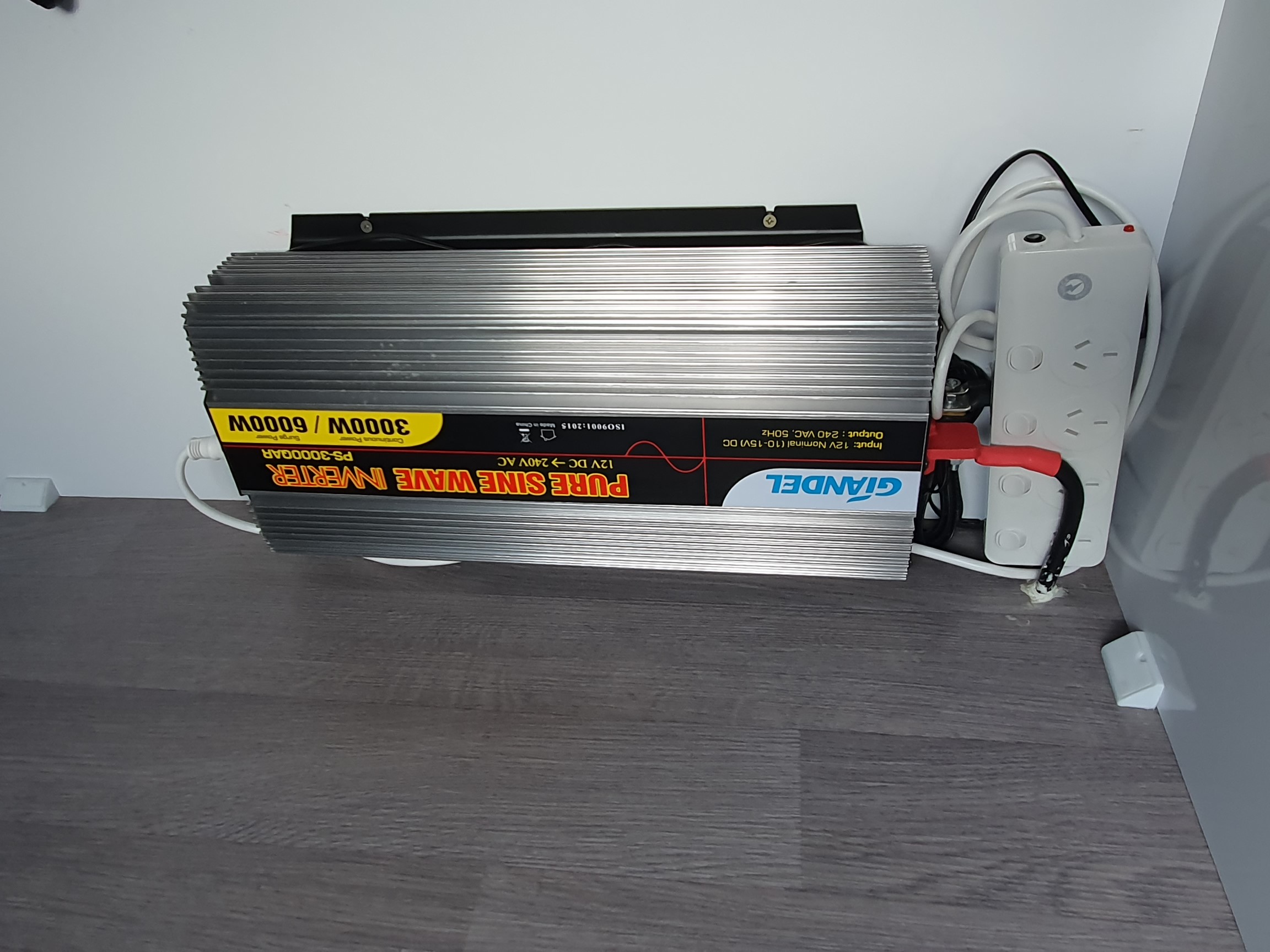
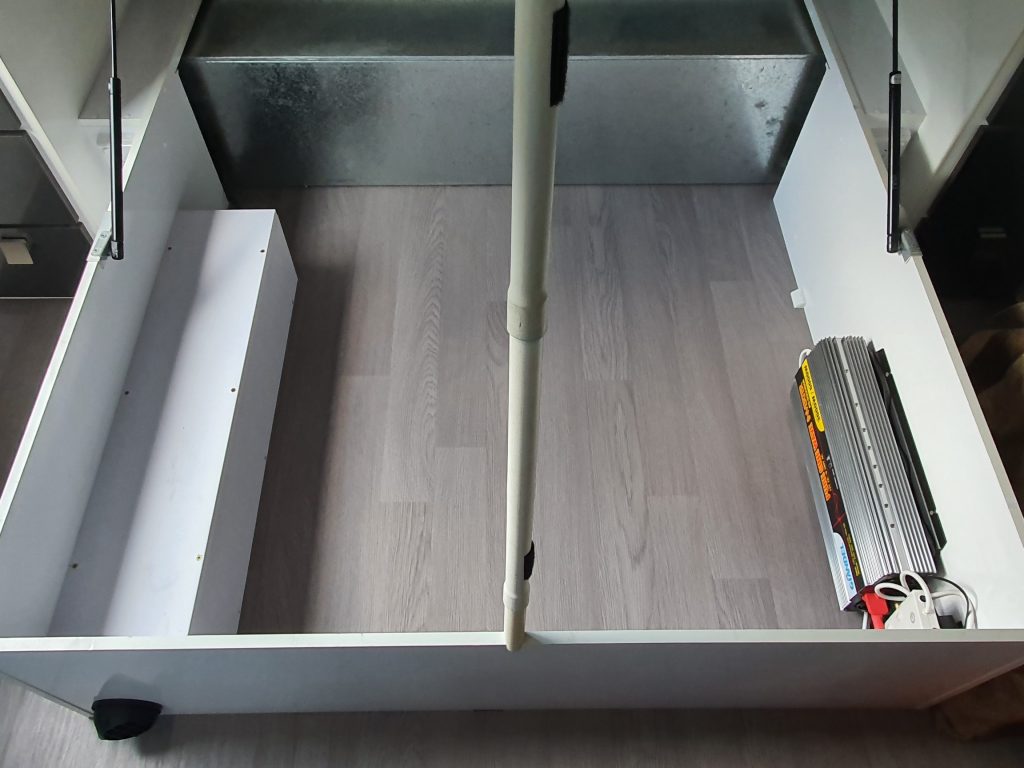
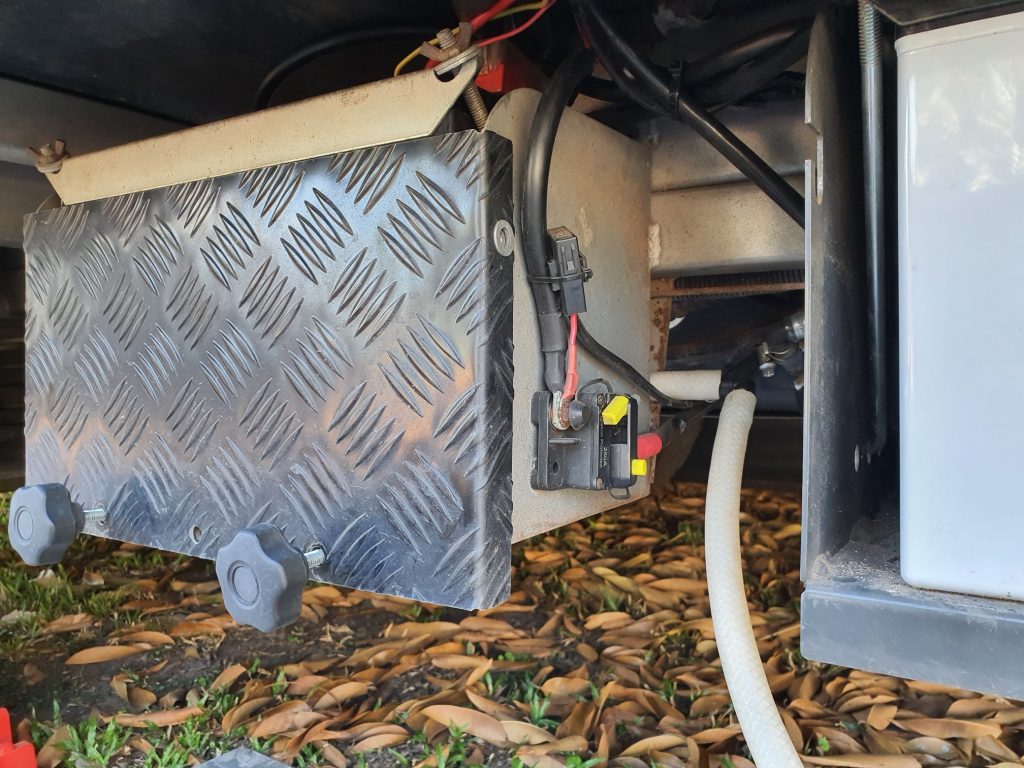
Want to understand a little more?
I thought I would now add some background info for anyone interested in learning more about what your setup might need.
Inverters are rated by the maximum constant power they can provide in watts (I will just use w for watts from now on). How big you need is determined by what you want to run from it. A small TV might be rated at say 50w, a small blender maybe 600w, the Breville Nespresso coffee machine is 1200w, its milk frother 400w, etc. So to safely run the coffee machine and the milk frother at the same time would need 1200w + 400w or a 1600w inverter. A normal home power point can provide up to 2400w safely, so this is not a bad size to aim for if you want a good all round system.
OK, so what’s the problem then in just stuffing in a massive inverter and running everything off the batteries? The batteries.. Lets do a little electronics study (just a little, I promise – and it will help you understand). Power (watts) equals Current (Amps) multiplied by the Voltage, or rearranging, Power/Volts = Amps (as its amps we are interested in here). For our example here we are going to assume an absolutely perfect system with no losses, just to make your life easier for this ‘understanding’ exercise! (by losses I am referring to the ‘efficiency’ of an inverter – on average around 90% of power in comes out, the rest is lost in heat and running the electronics of the inverter itself).
Lets look at the 1200w coffee machine. Our 1200w device at 240v will draw 1200w / 240v, or 5 amps (per hour) from the power point. Power (watts) is a relatively constant thing (excluding losses as mentioned before), so now to run this off 12v, its 1200w / 12v, that is it will draw 100 amps per hour from the battery. Assuming our coffee machine runs for 5 minutes, that’s 100 amps for 5 min, or 8.3 amp hours from your batteries total capacity. Not a lot, though 100 amps does require some solid cables.
Lets up this to an air conditioner. Most current ones will average around the 1300w mark in cooling mode, so just a little more than our coffee machine. However, this is now running all the time, not just a couple of minutes. So that 100amp per hour is now the total capacity of the 100 AH battery most vans come with as standard. Add to that, an AGM battery does not like being run below around 50% and now you can run your aircon on fully charged batteries for about 30 minutes and your batteries are done.
See a problem here? Now you need bigger batteries… Bigger batteries will run your aircon longer, great! So we upgrade to a couple of Lithium batteries – these can use all their capacity and are much lighter. So we for example now have 280AH of LiFePO4 on board, means I can run my aircon for 2 & 3/4 hours! YAY. Except… now I need to charge the batteries.. So now I only have 300W of solar at present, in a perfect ideal world we might get 20 amps out of this (20 amps per hour) so I need 14 hours of mid day sun to recharge my batteries. I say Mid Day sun as the solar works at it’s peak at mid day, morning and afternoon will be significantly less efficient. So if running nothing else at all apart from the aircon for a couple of hours on the first day would take me probably 3 to 4 days to recharge the batteries from my current solar panels. Now we need more Solar panels..
As you can see, it’s not just a simple throw more stuff in and off you go, don’t forget of course that every battery and solar panel you add is more weight – so that’s less capacity for food, clothes or water you can carry!
Any questions or queries don’t hesitate to shout out.


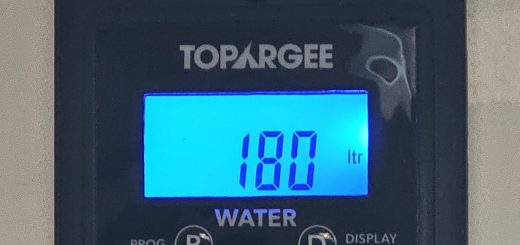
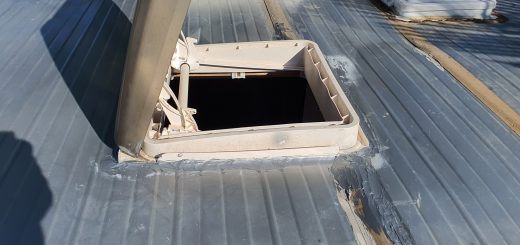
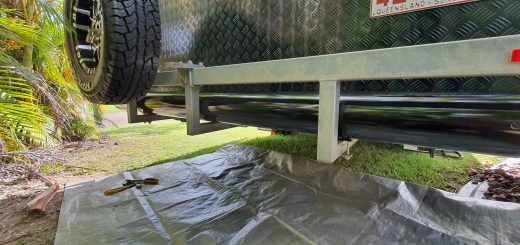
Recent Comments